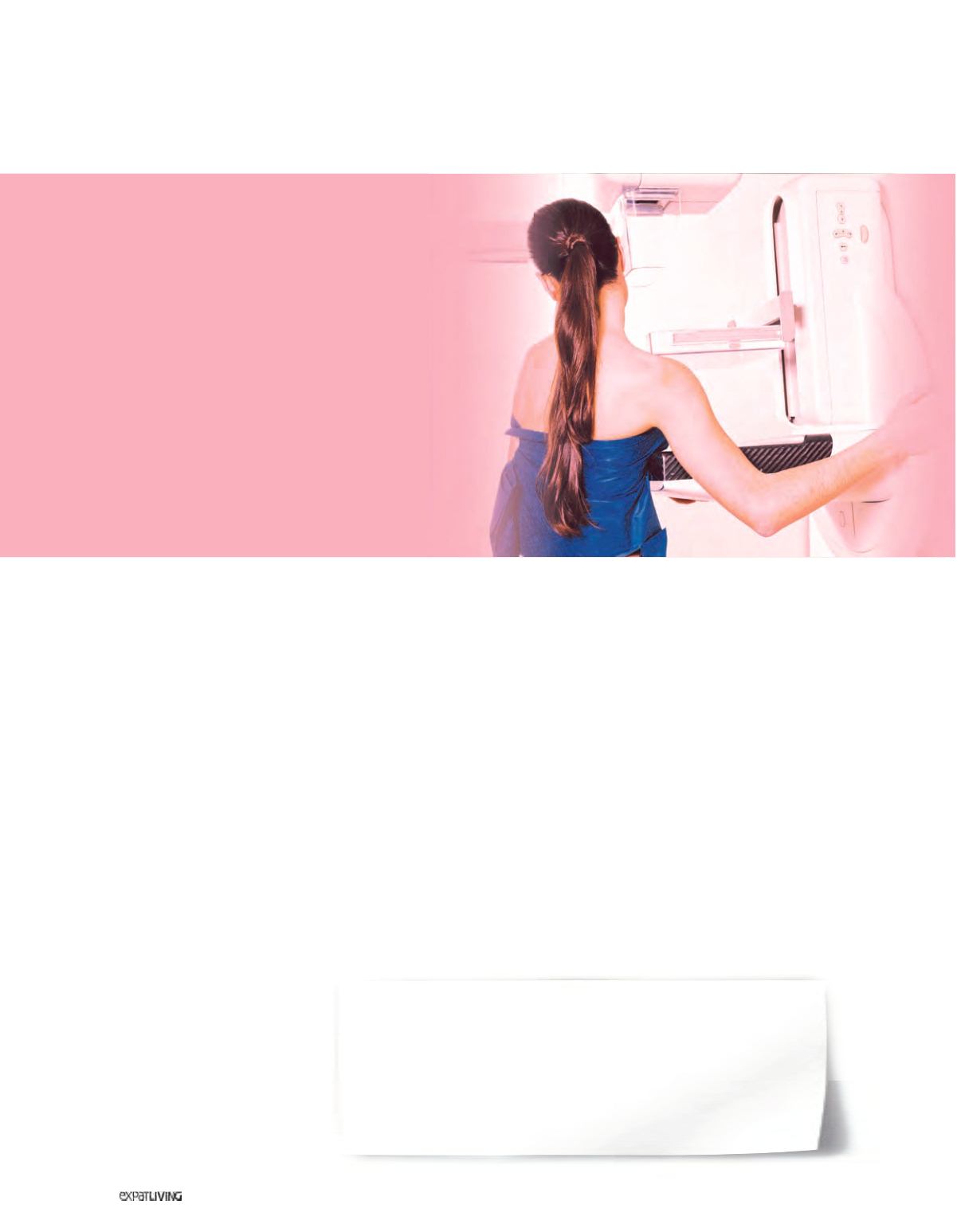

HEALTH&FITNESS
304
October14
THE
GREAT
DEBATE
By Amy Greenburg
Breast cancer screening has
been a source of controversy
f o r de c ade s , w i t h s ome
medical experts and patients
questioning whether the benefits
of mammography outweigh the
risks. Currently, most women
use mammography as their
main form of routine screening,
wh i l e ot he r me t hods l i ke
magnetic resonance imaging
(MRI) are typically conducted
only for further evaluation, or in
conjunction with mammography,
particularly for those women at
high risk. Though most major
health organisations have
concluded that mammography
is a valuable screening tool,
others maintain that MRI is
more effective and should be
primarily conducted even for
those women with an average
risk of developing breast cancer.
Here’s a look at the not-so-black-
and-white debate.
According to Dr Chan, recent advances in the field of mammography
make the screening process even more effective. One example is
3D
mammography
(tomosynthesis), which is an extension of a digital
mammogram. “The breast is compressed once and the machine takes
many low-dose x-rays as it moves over the breast,” she explains. “Then,
the images are combined to give a three-dimensional picture. This method
uses more radiation than the standard two-view mammogram, but it may
see problem areas more clearly and may possibly find more cancers.”
Density and false negatives
The debate over the age at which women
should start screening for breast cancer
is controversial, partly because younger
womenhavedenser breasts, whichmakes
it difficult to interpret mammograms in
women below 50, or below menopausal
age. After menopause, the breast’s
glandular tissue is replaced by fatty tissue,
making mammographic interpretations
moreaccurate. As a result,mammography
isn’t generally considered an effective
technique for younger women.
The age issue aside, women with
denser breasts are usually encouraged
to undergo MRI or ultrasound screenings
as mammograms don’t always pick up
cancers hidden by the dense tissue,
producing false negatives – when
mammograms appear normal even
though breast cancer is present, creating
a false sense of security and a possible
delay in cancer diagnosis.
While it’s true that MRI has been shown
to rule out the presence of cancer to a
high degree of certainty, making it an
excellent tool for screening – particularly
for patients at high genetic risk or those
with dense tissue –many experts point out
thatMRI canmiss some cancers that would
be detected by mammography; while
MRI is considered to be more sensitive,
mammography is considered to be more
specific. Breast surgeon
Dr Georgette
Chan
,forinstance,recommendsMRIscans
only in combinationwithmammograms for
certain groups of patients, including young
women with dense breasts, those with a
strong family history of breast cancer and
those with breast implants.



















